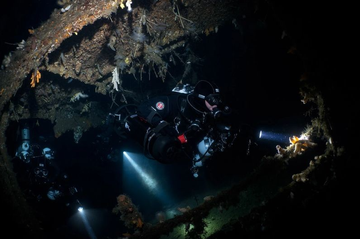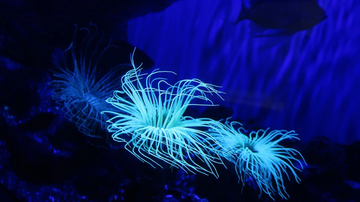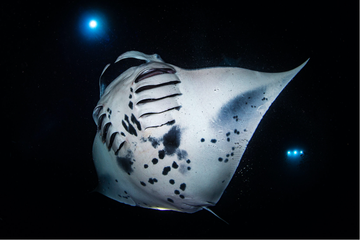In the vast ocean, light can only penetrate a limited depth, yet humanity's exploration of the deep sea has never ceased. From ancient torches to modern high-brightness LEDs, the evolution of dive lights is not just a history of technological advancement but also a magnificent chapter in humanity's conquest of darkness. Today, let’s dive into history and see how dive lights have progressed step by step to where they are today!
I. The Primitive Era: Torches and Oil Lamps (Before Christ – 19th Century)
-
Diving Illumination in Ancient Greece and Rome
Early divers (such as sponge harvesters) used waterproof torches, but the flames were easily extinguished, and the burning process consumed oxygen, posing significant dangers. Later, improvements were made with glass-covered oil lamps, but these had low brightness and short endurance, making them suitable only for very shallow waters.

2.The Ingenuity of Ancient Chinese
"Watertight Lanterns": The Ming Dynasty's Tiangong Kaiwu (The Exploitation of the Works of Nature) records pearl divers using simple underwater lamps made of bamboo tubes and animal-fat candles, providing short-term illumination.
II. The Industrial Revolution Era: Gas Lamps and Arc Lamps (19th Century – Early 20th Century)
-
The Gas Lamp Era (1830s–1900s)
"Diving Bell + Gas Lamp": In the 19th century, divers used acetylene or magnesium lamps, which offered improved brightness but were highly flammable and explosive, posing significant safety risks.

Limitations: Dependent on air supply from the surface, unable to move freely.
2. Attempts at electric arc lamps (1890s)
Early electric lamps: Inventors tried to use carbon arc lamps (similar to the light source of early movie projectors), but they were bulky and only used for large diving equipment

III. The Birth of Modern Dive Lights (20th Century)
-
Waterproof Flashlights (1920s–1950s)
First-generation dive flashlights: Used rubber seals and tungsten filament bulbs, but were prone to leaks and had short battery life.

Military promotion: During World War II, frogmen used improved diving lights to perform tasks, which promoted technological development.
2. Halogen lamp era (1960s-1990s)
Brighter and more durable: Halogen bulbs provide higher brightness, but they generate a lot of heat and the batteries are bulky (lead-acid batteries are often used).

The rise of professional diving: As scuba diving became more popular, brands such as UK Diving and Princeton Tec launched commercial diving lights.
IV. The LED Revolution (21st Century - Present)
-
Breakthrough of LED Technology (2000s)
High Brightness + Low Energy Consumption: LED light sources revolutionized dive lights, with 1000+ lumens becoming standard and battery life increasing 5-10 times.
Lightweight Design: Lithium batteries replaced NiMH/lead-acid batteries, reducing weight by over 50%. -
Smart & Multifunctional Era (2010s-Present)
Adjustable Brightness + Multi-Mode: Modern dive lights feature strobe, SOS, and stepless dimming to meet diverse needs.
Photography-Grade Lighting: High CRI (Color Rendering Index >90) LEDs have become essential for underwater photographers.
From torches to smart LEDs, the evolution of dive lights reflects humanity's enduring spirit of ocean exploration. In the future, with advancements in wireless charging and biofluorescence technology, we may witness even lighter, brighter, and more eco-friendly underwater lighting solutions.






cixhh0